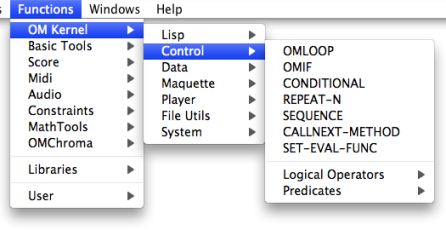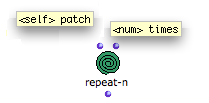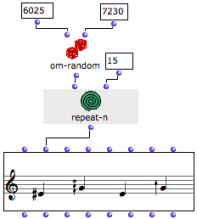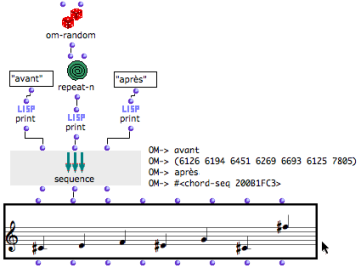Sequential Operators
Sequential operators control the occurrences of operations in program. They can apply to the iteration of an operation, or to the succession of several operations at a single evaluation.

Sequential operators can be accessed via the OM Kernel / Control menu.
Repeat-n : Iteration
Repeat-n evaluates something a number of times and collects the results in a list, so that the manual evaluation doesn't have to be repeated.
 | Repeat-n has two default inputs :
The data assigned to "self" is repeated n times. The result is returned as a list by the output. |
Here, repeat-n is applied to om-random to produce a random notes sequence.
Repeat-n evaluates om-random 15 times : each time, a random value is returned. The resulting list is returned to the pitches input of the factory box. |  |
More complex or specific iterative processes can be designed and controlled via the OMLoop module editor.
Sequence : Executing Several Tasks
 | The sequence box executes a sequence of distinct operations.
|
A chord-seq is generated while other tasks are executed.

When the chord-seq is evaluated, sequence performs three tasks :
print "avant",
generate and print a random list of numbers,
print "après".
Then, the value of its second output is returned to the "pitch" input of the chord-seq.
Note that without print, the Listener wouldn't display the values the outputs of sequence. These values can be returned with an individual evaluation of each output.
